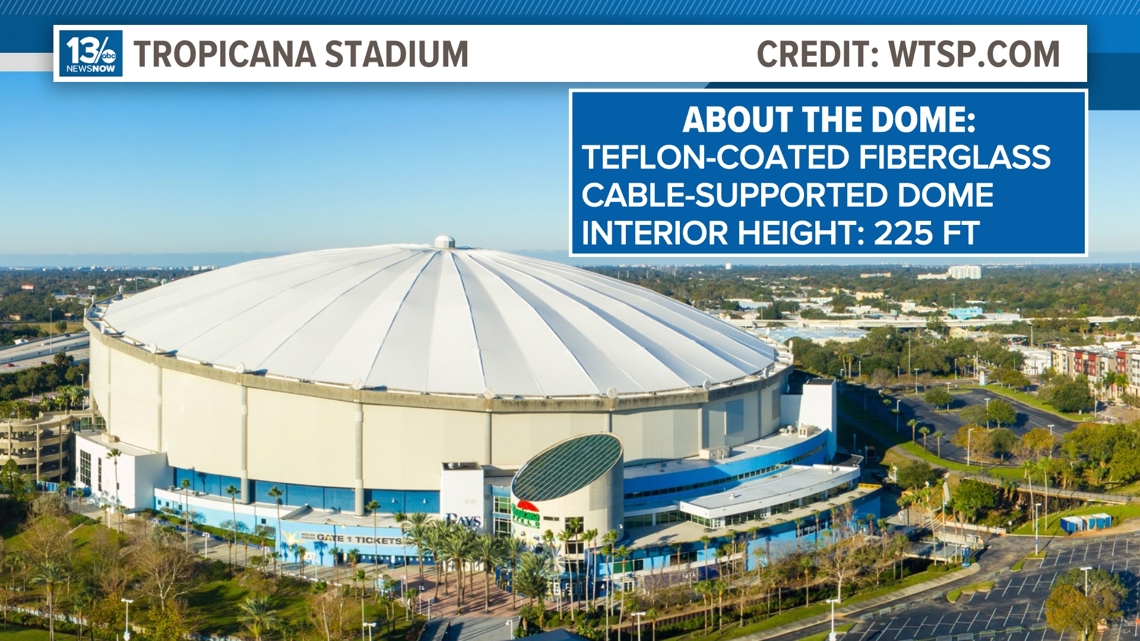ST. PETERSBURG, Fla. — When Hurricane Milton made landfall over Siesta Key Florida Wednesday evening, it was a Category 3 hurricane with maximum sustained winds of 120 mph somewhere within the storm.
The maximum winds reported from St. Petersburg Wednesday reached 101 mph as the hurricane stormed through.
No doubt winds that strong can take a toll on structures. But the dome over Tropicana Field was built to withstand winds of 115 mph. And you may be wondering how the roof could have been shredded.
I am not a structural engineer, but I can tell you about winds and how they can change with increasing height above the ground.
At 10:30 p.m., Albert Whitted Airport reported winds of 101 mph. Tropicana Field is very close, only a mile and a half from that airport.
Winds observed at the surface, typically increase as you go higher above the ground.
The interior height of the dome above the field at the Trop is 225 feet. Winds at that height have less friction from objects like trees and buildings on the ground. Winds move a bit more freely with less friction and can be significantly stronger.
Air aloft is also typically less dense. That also allows the air to move more quickly. There may also be some difference in wind speed from location to location, even over one or two miles.
The dome is one of the world's largest cable-supported domes. The roof is made of Teflon-coated fiberglass. It appears once a hole formed in the roof, and the wind was able to get underneath and into the top of the dome, the dome material started to shred to pieces and stood no chance against the powerful winds from Hurricane Milton.



